Want to know who had the most snow last winter? Well, you won’t find the answer in the northern Alps, that’s for for sure. After a run of decent seasons the region’s luck evaporated in 2010-11, and it notched up one of its driest and least snowy winters on record. Okay, so the southern Alps fared better, but even here snowfall totals were generally modest, and only the extreme south-western tip of the Alps enjoyed anything like a bumper season.
But what a contrast across the Pond! This was a La Niña year (and a strong one at that) – and by late summer 2010, it was clear the odds were stacked in favour of a bumper winter for the northern Rockies and Pacific North-West (welove2ski was running news stories about it in August last year so you can’t say you weren’t warned).
Not only did La Niña deliver, but many other regions got walloped as well, resulting in the best North American snow season for 36 years.
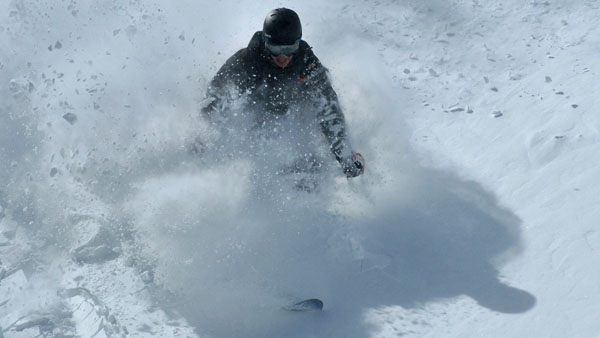
France
According to Meteo France this was the driest winter in the Northern French Alps since 1949, which also endured “the worst snow in a generation”. Grim reading by most standards, certainly, and the stats back it up: 3 metres for La Plagne (recorded at 2050m) and just 2.3m for Val d’Isère (at 1850m) is less than half of what you would expect in an average season – indeed you would have to go back to 1975 to find a leaner snow year in the Tarentaise.
Of course, wasn’t bad everywhere – or all the time. The southern Alps fared better, and little old Isola 2000 (just north of Nice) clocked a very respectable 6m (compared to a seasonal average of 4.5m) making it the snowiest resort in France for the 3rd consecutive year!
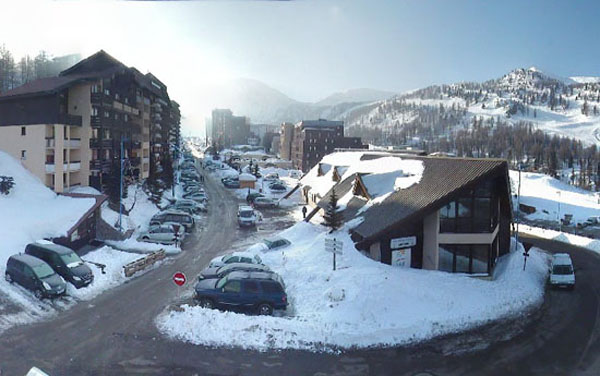
But the overall picture was bleaker in the northern French Alps – despite a promising start to the season (anyone who skied the memorable powder on Christmas Day might be forgiven for wondering what all the fuss was about). The trouble is that for some areas that was as good as it got, and it didn’t take long for the cracks to start to appear. January was dry, and below 1500m there was little or no natural snow cover by the end of the month – this being almost unprecedented for the middle of winter. Higher up there was still some good on-piste skiing on offer – thanks to ceaseless work with snow cannons and grooming machines – but sharp edges were the order of the day and thoughts of powder had to be put firmly on hold. Resorts waited patiently for things to improve, but despite a little snow mid-season, that monster dump never materialised. To add insult to injury, hopes of a late flourish were killed stone-dead by the most savage spring thaw in living memory and by early April it was game over for all but the highest resorts.
In fact, on April 9, the shade temperature reached 26.4C in Chamonix – that’s nearly 15C above average and higher than you’d expect in August!
(Further indication of how dry the winter was comes from the fact that several resorts consider a freak storm of June 1 to have been the heaviest dump of the “season”!).
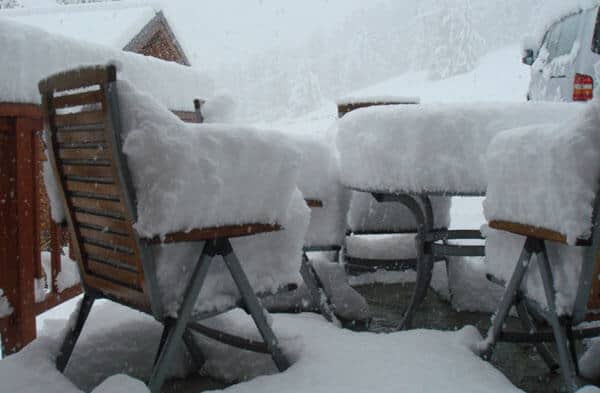
Switzerland
Except for a tiny corner of the Engadin, right on the Italian border, nowhere in Switzerland even got close to its average snowfall. That’s not to say it was all doom and gloom – St Moritz can reflect on a decent enough season, especially early on. Elsewhere, Arosa (1720m) managed just 2.3m, less than half its long term average and Verbier’s 2.5m (taken at 2200m) was similarly unimpressive – 6m would be more what you would expect in an average season. If one resort did stand out it was Engelberg which seemed to catch the brunt of the few decent storms that the season had to offer.
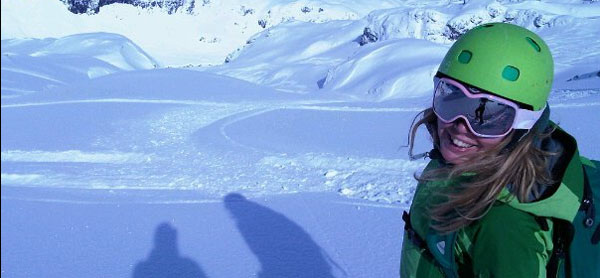
Austria
As elsewhere in the Alps, resorts close to the northern fringes of the Alps generally had the worst of it. Despite its formidable reputation, Lech (1450m) managed only 3.4m, its lowest total since records began in 1977, and less than half of its long-term average. However, locals agree that (on-piste at least) conditions were okay and that 2006-07 (3.5m) was a lot worse. Nearby Warth-Schroecken (1600m) saw 6.9m of snow. This may sound impressive, but it is actually the second lowest figure on record – testament to this area’s unique microclimate where average annual snowfall is over 10m (the highest in the Alps).
Further east, high altitude Obertauern (1700m) was also well below par with 4.2m, so it is little surprise that low-lying Kitzbuhel (760m) struggled to a paltry 1.6m (average 2.6m). The pick of the bigger Austrian resorts was probably Obergurgl (1930m) with 4m of snowfall – nothing out of the ordinary by any means, but enough to ensure that its high-altitude slopes offered some of the most consistent skiing in Austria.
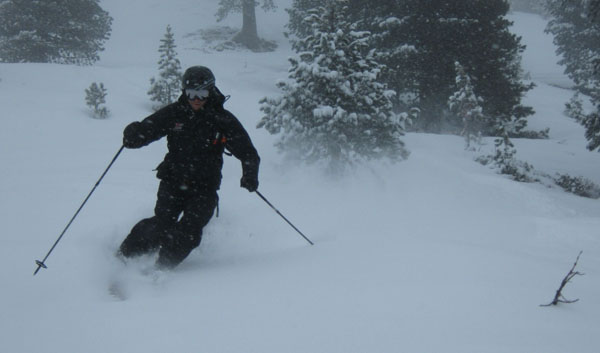
Italy
Whilst the northern Alps grabbed most of the headlines (albeit for the wrong reasons) there were few problems for Italy this season, which for the 3rd year running was the pick of the Alpine countries. It didn’t reach the dizzying heights set in 2008-09 – but given the unfolding situation further north no-one was complaining. Of the major resorts, only Cervinia (2050m) was significantly below par – 2.5m is less than half of what you would expect in an average season. But elsewhere, Courmayeur was close to average with 3m at Plan Chercrouit (1700m) and 5m up top, as was the Dolomite resort of Arabba (1600m) which clocked 3.8m at village level. The story of the season, however, belongs to a sleepy little resort called Limone Piemonte, due east of Isola 2000 and two hours’ drive south of Turin. Here they enjoyed an epic season, clocking 9.7m (at 1875m) and can comfortably claim the title of THE snowiest resort in the Alps 2010/11.
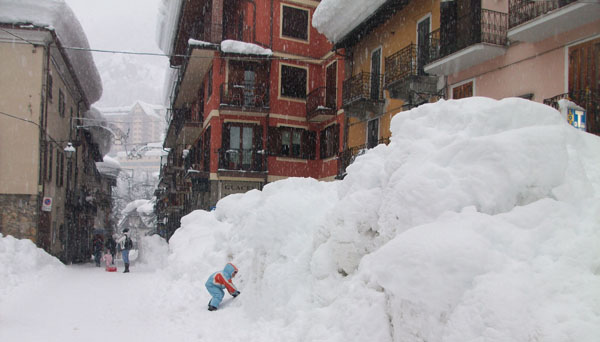
North America
North America had a remarkable season by any standards, with practically all regions recording above-average snowfall. Whilst a bumper year was widely predicted in the northern Rockies and the Pacific north-west (which tend to benefit during powerful episodes of La Niña), it came as a welcome bonus elsewhere, particularly in California. There, the resorts endured a warm, dry January which was dubbed June-uary by the locals. But the gloom turned to glee when a series of mighty Pacific storms dropped deep powder across the mountains in the second half of the season.
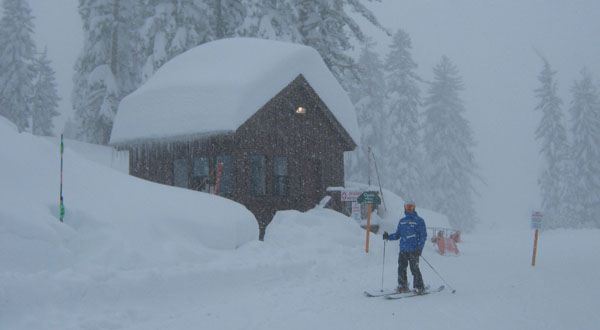
In western Canada, Whistler had a vintage season with 15.4m mid-mountain, some 50% above average. Further inland, Fernie also lived up to its snowy reputation with 10.7m (9.3m average). It was a similar story across the border in Jackson Hole (Wyoming), with a whopping 13.7m mid mountain (average 9.4m). Followers of welove2ski blogger Josh Cooley will not have been surprised by the record-breaking 13.2m that fell in Breckenridge, Colorado (average 7.3m). Records also tumbled in Snowbird (Utah), which broke the 700 inch (17.8m) barrier for the first time and has clocked up 19.88m of snow so far – it won’t officially finish its ski season till July 4. Snowiest of all, however, were the Lake Tahoe resorts in California and it is here that we find our winner.
Ladies and gentlemen (drumroll please) – the answer to the question, “Who had the most snow last winter?” is…with a staggering total of 20.4m of snow in a single season…KIRKWOOD!
Here’s a sample of conditions out there, back in March.










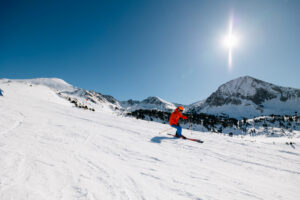
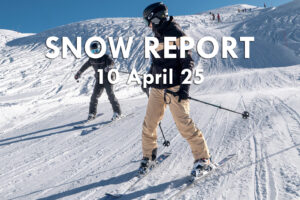

Add Comment